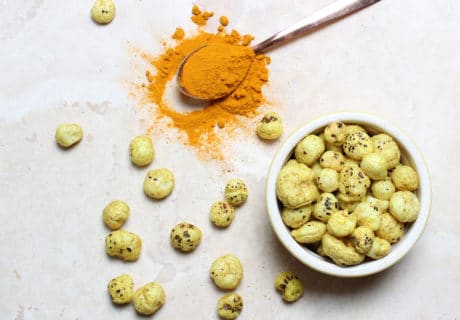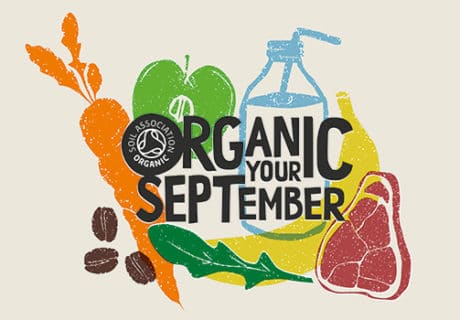In July the Love Natural, Love You show at Olympia, London, saw a panel of experts discuss the significance of conscious beauty from their own perspective and look at how consumers can make changes for the good of their health and the environment.
The panel was chaired by Jayn Sterland, MD, Weleda UK, and comprised: Dr Mark Smith, director general, NATRUE; Helen Lynn, health advisor, WEN; Imelda Burke, founder, Content Beauty and author of The Nature Of Beauty; Emine Rushton, wellbeing director, Psychologies magazine.
“Conscious Beauty is a relatively new term,” said Helen Lynn, “but it aims to make us more aware about the products we use, and their impact on our bodies and our environment. It’s about choosing safer products from companies that make them wisely. It’s also about creating less waste as well, and actually not trashing the planet for the sake of beauty or vanity.”
For Emine Rushton, a conscious choice is one that aligns with her values and ethical belief systems and personal philosophies. “With regards to beauty, they are choices that I feel are kind and have a minimal impact on the environment. It’s an ethical choice that’s being made but also a choice that will support my body, that will work synergistically with my body and its needs,” she said.
“For me the conscious beauty umbrella term is really relevant because it covers everything, rather than just clean beauty which is about ingredients or exclusion of them, conscious beauty celebrates what brands are doing over and above ingredients quite often,” Imelda Burke added, explaining that it encompasses packaging, sourcing and marketing, through to transparency and what ingredients are included or excluded.
It’s about choosing safer products from companies that make them wisely. It’s also about creating less waste as well, and actually not trashing the planet for the sake of beauty or vanity
As to why the term is particularly relevant today, as compared to 20 years ago, the panellists mentioned a number of current problems ranging from packaging, endocrine disruptors and mineral oil to the environmental impact of ingredients, such as microbeads.
Regarding mineral oil, Burke explained: “It’s a non-renewable resource and you don’t need to use it. It’s cheap. Brands are just using it because it’s great for their profit line, but not for the environment. My main concern is to question what happens to ingredients after you have applied them to your skin, are you absorbing them, then excreting them and they are ending up in the environment, or washing them off and they are ending up in the environment?”
“It’s really interesting that we’ve got our consciousness raised about packaging but we’re not yet there with the ingredients,” Sterland said, highlighting research which found that 70% of the environmental impact of a beauty product is from the ingredients, not the packaging.
“I think quite often brands are quite clever about using ingredients that benefit the shelf life of a product rather than the consumer, so learning about ingredients and how to read labels becomes really important as a consumer,” says Burke. “And once you have that knowledge you can make your own choice, you’re not so susceptible to the marketing of brands. I think the main benefit of choosing more natural products is the benefit on the skin and the benefit on the environment would be the two key things for me.”
Expanding upon the benefits of choosing natural and organic beauty products, Lynn flagged up the value of certification for consumers. “I think because of the certifications that are available – COSMOS, NATRUE, Soil Association certification – you have good assurance that what you’re buying is really going to be much better for you and much better for the environment than buying a mainstream cosmetic product. So for me it’s about having that reassurance, having a safer product, and thinking about what you use, how you use it, how much of it you use.”
I think quite often brands are quite clever about using ingredients that benefit the shelf life of a product rather than the consumer, so learning about ingredients and how to read labels becomes really important as a consumer
Mark Smith agreed that certification is important but also believes consumers need to dig a bit deeper and do their own research. “I would say the best thing to do is look for a seal, like our own NATRUE seal for example or COSMOS or Soil Association, something that’s meeting a high benchmark. Of course even those high standards themselves may not reflect everything that you are looking for, so you have to do your due diligence yourself as a conscious consumer. You can’t just accept things at face value when packaging says a product is natural or organic because that is just a claim at the end of the day, and there is a rather large spectrum of shades of green.”
Sterland then asked the panel how consumers can best start becoming more conscious about their beauty regimes. “The switch can be one at a time, so as you run out of one product you would switch it to a natural and organic alternative,” Burke commented. “I think as far as what to switch first, I would consider the greatest surface area, anything that is going all over your body such as body lotion or body oil, is quite easily switched and easy to blend your own as well.”
You can’t just accept things at face value when packaging says a product is natural or organic because that is just a claim at the end of the day, and there is a rather large spectrum of shades of green
Lynn suggested that consumers could use the product switch as a lobbying tool. “Use it as an opportunity to write to the manufacturer and say you are no longer happy to use it. Take a picture and tweet it to say to the brand that you’re concerned about using this or that ingredient. Think about having a campaign and having a little bash at the big multinationals, telling them you’re concerned about what they’re pumping into the environment and selling in their products.”
Rushton had another tip: “I think it’s really healthy and helpful to ask ourselves each time we think about buying something ‘Do I actually need this?’. Half the time we’re on autopilot. We think we need the foundation, and the concealer, and the bronzer, and then the contouring thing, and the highlighting thing, and the brow pencil and the mascara. Ask ourselves what that knee-jerk reaction is all about, and try and unpick all those urges that are very deeply rooted in our society, particularly as women. What we tend to find is the less we use, the more liberated we feel.”
Buy less, use less, and be more aware are probably three good changes we can make. And question, with pretty much every purchase, want versus need
To answer about my own bathroom cabinet,” added Smith, “I would say the simple approach (if I take my NATRUE hat off for a moment) is: buy less, use less, and be more aware are probably three good changes we can make. And question, with pretty much every purchase, want versus need. So perhaps don’t use as much.”
Finally, Burke advised consumers to think about who they are giving their money to. “It might be a small retailer or a large retailer, but beyond that who owns that company? Quite often there are small, wonderful natural brands who are incredibly successful and then get bought by larger non-natural multinationals and we tend to delist brands like that because they can lose control over how they’re made and you can lose an element of transparency. So I think as a consumer it’s a question of asking where do you want your money to go, do you want it to go to someone who is growing their own ingredients and turning them into products and you have a chain of transparency, or do you not care where your money goes? I think that’s a really good question to ask.”





